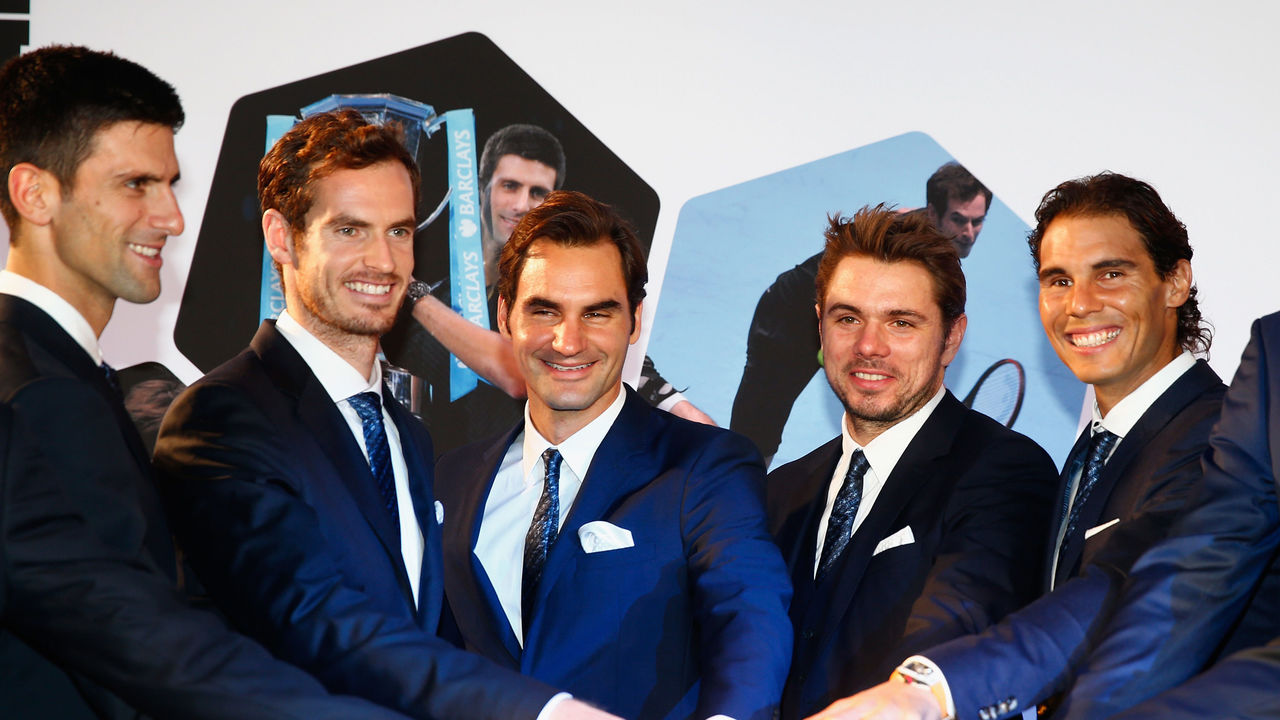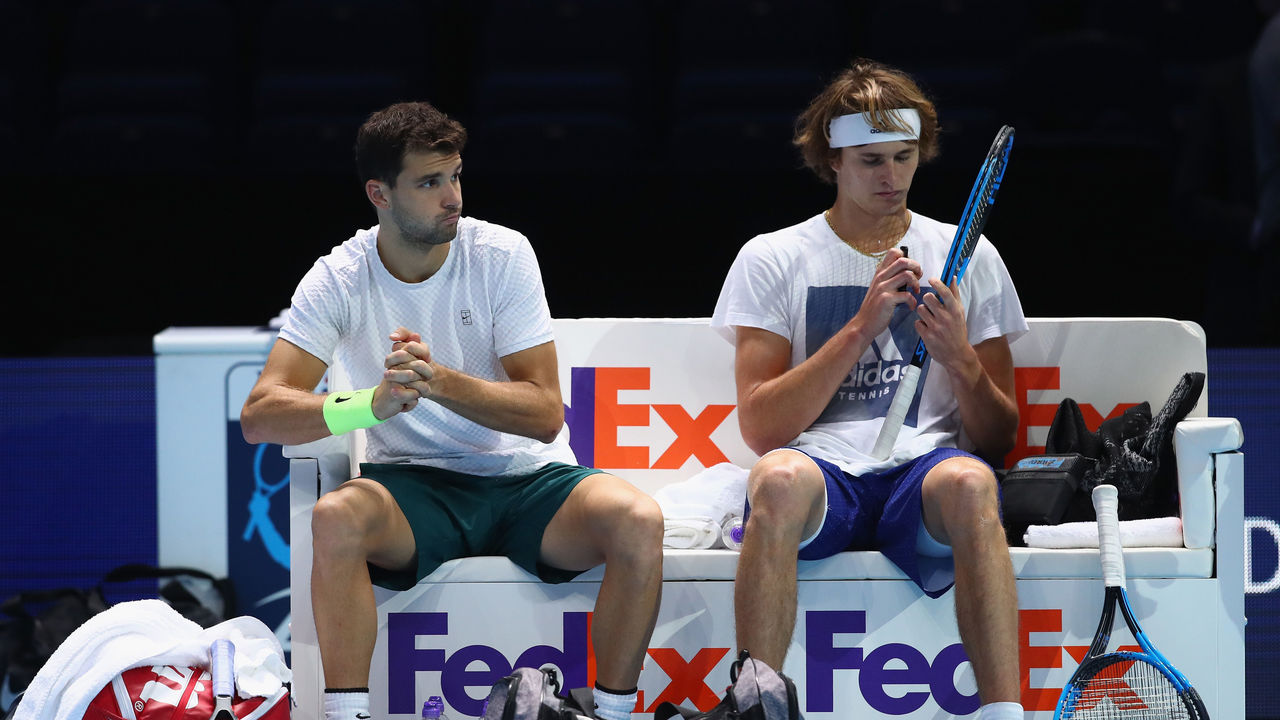Is stability at the top of men's tennis a thing of the past?
In the past, this would be the point at a Grand Slam in which the men's field began to calcify, in which the first week-and-a-half began to feel like a formality as the reliables took center stage and rendered any early-round drama obsolete.
Not so at this year's Australian Open, where three of the remaining six players in the men's draw are unseeded (Kyle Edmund is the highest-ranked of the three at No. 49), and the likes of Rafa Nadal, Novak Djokovic, Stan Wawrinka, Sascha Zverev, Grigor Dimitrov, Juan Martin del Potro, and Dominic Thiem have all been removed from the frame. Of the top 11 pre-tournament title favorites, only Roger Federer remains.
In place of Federer's high-seeded and high-profile peers, we have a precocious upstart in Hyeon Chung, a journeyman in Tennys Sangren playing in his first Aussie main draw, and a promising but unproven up-and-comer in Edmund joining a pair of more established guys (Marin Cilic and Tomas Berdych) with some Grand Slam pedigree but perpetually spotty results.
This model isn't entirely new. The most recent major, last year's US Open, featured four first-time men's Slam quarterfinalists, two first-time semifinalists, and a first-time finalist in Kevin Anderson. The fall swing proved no less erratic, with Jack Sock winning a maiden Masters title (over Filip Krajinovic!) in Paris, and Dimitrov winning the ATP Finals over David Goffin. After more than a decade of consistency and reliability at the top, chaos is becoming the norm in men's tennis.
Injuries have obviously played a significant part in creating said chaos, but that's kind of the point; for as good as they can all still be when healthy, those ever-reliable stalwarts who've owned the game for so long may simply be too old to dominate consistently. Federer, Wawrinka, Nadal, Djokovic, and Andy Murray - who've collectively won 49 of the last 51 majors, and are aged 36, 32, 31, 30, and 30, respectively - have all taken extended sabbaticals to deal with nagging ailments in the past year. Apart from Federer, their bodies have continued to fail them since they returned.

It was one thing for Djokovic to lose in straights to a zoning Chung in the fourth round, but it was jarring to watch Chung make Djokovic - whose speed and conditioning and agility once made him virtually unbeatable - look slow and immobile. Nursing a sore elbow and hip, the six-time Aussie champ could not keep up. Chung was so much quicker to the ball, so much more explosive, and the corporeal-defying horizontality that has long been the Djokovic signature was instead accented on the other side of the net, where Chung whizzed from corner to corner, slid into split-legged squash shots, and crouched low to dig half-volleys right off the baseline. Djokovic looked upright and stiff by comparison.
Nadal dealt with a knee injury at the end of 2017 that forced him out of the tour finals, then suffered an upper leg injury in the quarterfinals against Cilic and retired in the fifth set. Nadal hasn't been a paragon of health in his career, but he never retires from matches, even when he knows defeat is inevitable. If he can walk, he plays on. This was just the second time he's packed it in during a Grand Slam match.
Murray underwent hip surgery and is out until Wimbledon. Wawrinka, coming off knee surgery, looked like a shell of himself and lost to Sandgren in the second round in Melbourne. Even longtime gatekeepers like Berdych, David Ferrer, and Jo-Wilfried Tsonga are starting to age out.
Meanwhile, the would-be successors to the established order - while capable of breathtaking highs - haven't shown the ability to hold up physically or mentally for extended stretches. Cilic's endlessly frustrating age band is called the Lost Generation for a reason. Kei Nishikori sat out the Aussie Open with a wrist injury, and Milos Raonic - recovering from a wrist injury of his own - lost in the first round. Dimitrov had a golden opportunity to reach his first Slam final at this tournament, but played too passively and sputtered in big moments in his quarterfinal against Edmund.

Behind them is a group headlined by the obscenely gifted Zverev, who's been a force in ATP events but hasn't cracked the best-of-five formula, failing to reach a Slam quarterfinal to date. Thiem is already one of the game's best clay-courters, but he's had mystifying struggles on every other surface. Nick Kyrgios will probably win a major at some point, but consistency will never be his calling card.
Things will obviously change. Zverev is just 20, and perhaps in the near future, his generation of swaggering firebrands - with the likes of Chung, Denis Shapovalov, Andrey Rublev, Borna Coric, Jared Donaldson, and Frances Tiafoe - can build a similar oligarchical structure to the one we grew accustomed to. There's also no reason to believe Nadal won't continue to dominate the clay season or that Djokovic, Murray, and Wawrinka won't return to health and something approximating peak form. It's just hard to imagine it happening with the same consistency it once did, given all the mileage they've put on their bodies.
For now at least, anarchy reigns, and it's looking more and more like the week-in week-out, major-after-major stability that's defined men's tennis for most of the 21st century is the exception, not the rule. Forunately, as women's tennis has shown in its past year of Serena Williams-less free-for-all, that doesn't have to be a bad thing.
HEADLINES
- Angels settle lawsuit with Skaggs' family over fatal overdose
- NBA tweaks injury reporting rules, still wants changes to prop betting
- Kelce ready to give 'everything I got' in potentially final 3 games of career
- Eichel, Theodore out for Golden Knights' Canadian road trip
- Geno returns for Raiders vs. Texans' top-ranked defense